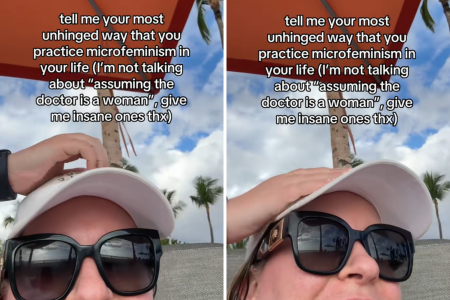This lawsuit brought by Mozzy Clark against the Washington State Department of Corrections (DOC) unveils a deeply disturbing account of alleged sexual assault and harassment within the walls of a women’s prison. Clark’s complaint centers around her former cellmate, Christopher Scott Williams, a biological male who was transferred to the women’s facility after identifying as transgender. Williams, a convicted child molester also serving time for domestic abuse, stands accused of subjecting Clark to a sustained campaign of terror, marked by threats, unwanted sexual advances, and ultimately, sexual assault. The lawsuit paints a grim picture of Clark’s vulnerability, trapped in a confined space with a physically imposing individual who allegedly exploited the situation to inflict emotional and physical harm. Clark’s account raises serious questions about the DOC’s policies regarding the housing of transgender inmates and the adequacy of their measures to protect the safety and well-being of all incarcerated individuals.
The lawsuit details a series of escalating incidents that allegedly occurred within the shared cell. Williams, who occupied the top bunk, is accused of looming over Clark, making sexually suggestive gestures, and openly expressing his desire for her. Clark alleges that Williams would expose himself to her, masturbate in her presence, and on one occasion, even touched her genitals while she slept. These alleged acts, perpetrated within the confines of their shared cell, created an environment of constant fear and intimidation for Clark. The lawsuit further contends that Williams brought a homemade dildo into the cell, further underscoring the alleged sexualized nature of the harassment. These accusations paint a picture of a prison environment where Clark was not only vulnerable to physical and sexual assault but also subjected to constant psychological torment.
Clark’s attempts to seek help from prison guards allegedly proved futile, highlighting a potential systemic failure within the institution. The lawsuit claims that despite Clark’s complaints, the DOC took inadequate action to protect her from Williams’s escalating abuse. This alleged inaction raises concerns about the prison’s responsiveness to reports of sexual harassment and assault, and whether the institution prioritizes the safety and well-being of its inmates. Even after Williams was eventually moved to a separate cell, the alleged harassment continued. Clark claims that Williams would seek her out in common areas, stare at her in the showers, and follow her into the bathroom, making lewd comments from adjacent stalls. This persistent pattern of alleged harassment suggests a failure to effectively address the root of the problem and ensure Clark’s safety within the prison environment.
The lawsuit further alleges that Williams’s behavior extended beyond sexual harassment to include threats of violence against Clark if she continued to report his actions. This escalation of alleged abuse underscores the power dynamic at play and the potential for retaliation against those who speak out against misconduct within the prison system. The lawsuit seeks restitution from the state for the “extreme emotional distress, shame, intimidation, humiliation, indignation, embarrassment, and fear” that Clark allegedly suffered as a result of Williams’s actions. This claim for damages reflects the profound psychological impact of the alleged abuse and the need for accountability for the alleged failures of the DOC to protect Clark.
Clark’s experience, as detailed in the lawsuit, is unfortunately not an isolated incident. Another inmate at the Washington Corrections Center for Women has also come forward with allegations of lewd and intimidating behavior by Williams and other transgender inmates. This separate account corroborates Clark’s claims and suggests a broader pattern of harassment and inappropriate behavior within the facility. The unnamed inmate described a climate of discomfort and violation, particularly in shared spaces like the showers, where transgender inmates allegedly leered at and made other female inmates feel unsafe. These multiple accounts raise serious questions about the DOC’s policies and procedures regarding the housing of transgender inmates and the effectiveness of their measures to protect the safety and privacy of all inmates.
The presence of at least 11 transgender inmates at the Washington Corrections Center for Women at the time of these alleged incidents highlights the complexities of managing diverse populations within correctional facilities. This case brings to the forefront the ongoing debate regarding the placement of transgender inmates and the need for policies that balance the rights and safety of all individuals within the prison system. While recognizing the importance of respecting gender identity, the allegations in this lawsuit underscore the potential risks associated with housing transgender inmates in facilities that do not adequately address the safety and privacy concerns of all inmates. This case calls for a thorough review of current policies and procedures to ensure that they effectively protect the rights and safety of all incarcerated individuals, regardless of gender identity. The goal must be to create a prison environment that is both safe and respectful for everyone within its walls.










